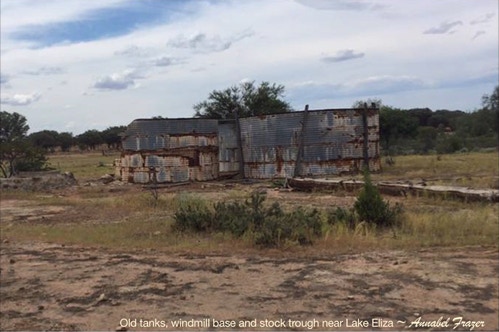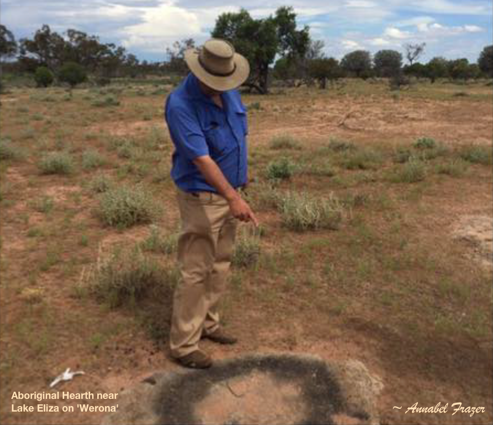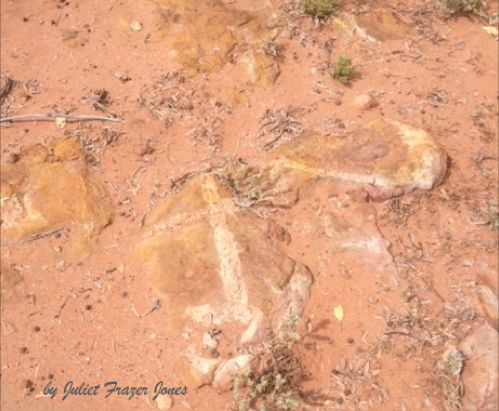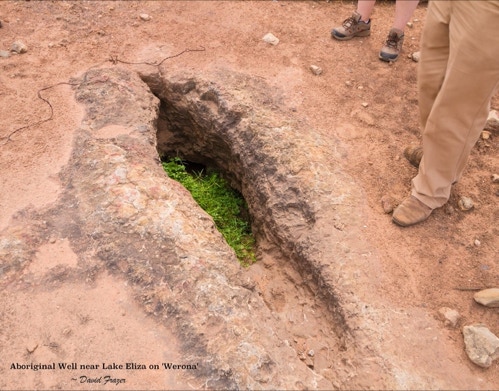‘Why did they leave? Where did they go?’
An Extract from a short history of ‘Werona’ written by Kathleen Frazer (nee Stephenson):
When Alexander Frazer first moved to ‘Werona’ …“water was carted from nearby Gamarren until a windmill was erected. He intended building just inside the boundary on the banks of Lake Eliza but was advised that quite often the lake dried back and the weeds etc made it very smelly. There was a native well there, and marks on the stones of instruments and tools having been ground and sharpened. He finally moved another five or six miles further in from the boundary and built “Werona”, meaning ‘quietness’.”
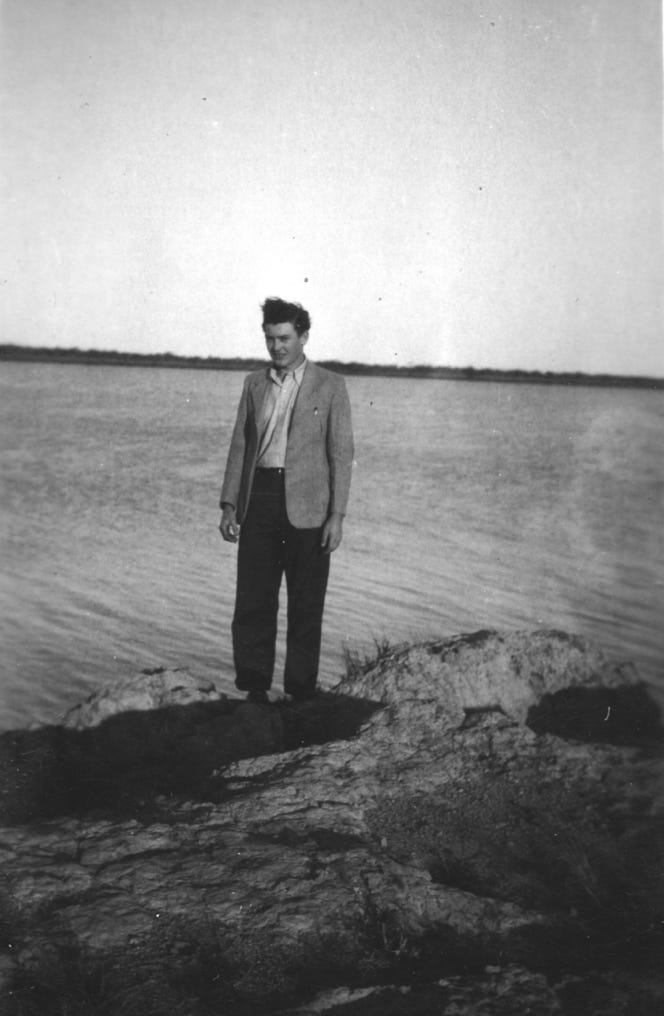
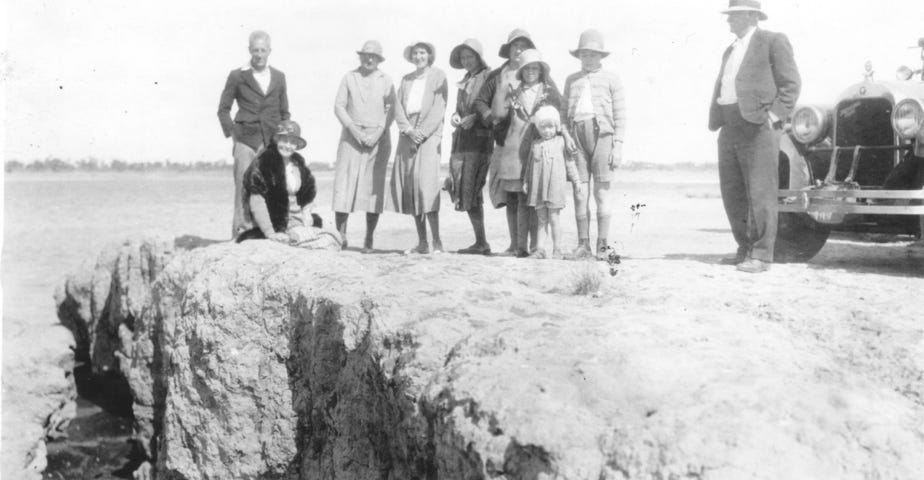
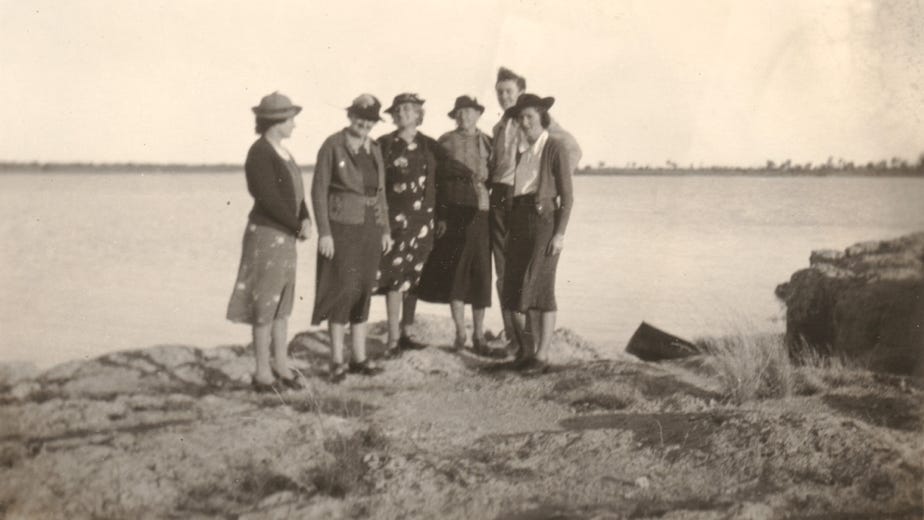
Windmill maintenance is an ongoing job on a sheep station, and more so during dry times. As a child I had countless trips in an old Dodge truck to “check on the windmill and the water trough up at the lake”. Although it was often fearfully hot, I loved these trips. I rarely got to see the ephemeral Lake Eliza full of water, it was more often dry. I recall times when the truck was driven over part of the dusty lake bed, and what was thought to be the remains of an aboriginal dugout canoe were pointed out to us. In both drought, and after welcome rain, my siblings and I spent many happy hours exploring the rocky ridges that ran beside the lake and the windmill. There on the rocks, evidence of an earlier aboriginal presence on ‘Werona’ was abundant and very clear. I could place my hands upon any of the traditional grinding hollows and feel it.
I remember asking two questions: “Why did they leave?”, and “Where did they go?” My father Tom, answered me as best he could, and the story that he told was a sad one. He explained that as the settlers came to the area, the original owners were forced to move on. He told me that the people who had made the grooves on the rocks had left the area before my great-grandfather selected the property in 1924. I loved the lake area, and once I knew that the traditional owners had been forced out of it the experiences of these visits deeply affected me. I felt very lucky to be able to live and play on this land that my great-grandfather had selected, and to be able to call it my home. However my joy was mixed with sadness when I thought of the original owners who had been forced to leave the place.
As I have researched my family history I have sought out the stories of the traditional owners of the land that my ancestors settled on. The records I have found begin in 1803, and the locations of settlement extend through Tasmania and the Eastern States.

…“Windmills have always been part of Australia’s pastoral history, particularly as they were less expensive than putting down an artesian bore. Maintained, mills provided water for thousands of stock, both sheep and cattle, using only the wind as their energy source.” - Robin Tait & David Hallam Dismantling a windmill. http://www.nma.gov.au/__data/assets/pdf_file/0015/5433/FriendsDec08-Dismantling-windmill.pdf
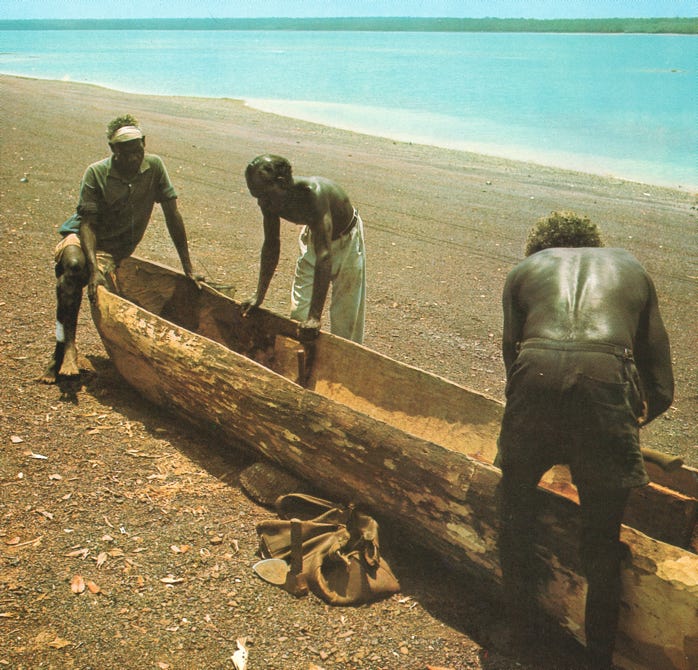
A dug-out canoe is carved from a single tree trunk.
In The Australian Aboriginal In Colour 1968 ~ Photographs by Douglass Baglin, text by Roland Robinson.
“To build a dugout canoe the Aborigines felled a suitable softwood tree. This was roughly shaped and hollowed out on the spot. It was then taken to the water’s edge where the final shaping took place. Careful chipping was necessary to work the sides down to a uniform thickness. There was no keel on a dugout canoe. Dugouts could be six metres long and about three-quarters of a metre wide.” Barry Struber, Paddle Your Own Canoe 1975 Plate 14 https://espace.library.uq.edu.au/view/UQ:272904/Archaeology_papers_No10_Paddle_your.pdf
RESEARCH Part A.
- RESEARCH - Questions and Inspiration.
- RESEARCH - My curiosity & my many collections.
- RESEARCH - Religion, Politics and the Great Pumpkin
- RESEARCH - The Orange and The Green.
- RESEARCH - Why did they leave? Where did they go?
- RESEARCH - Acknowledgement of Traditional Owners.
- RESEARCH - Stewart and Doody - a puzzling pair.
- RESEARCH - Maps Charts and Trees.
- RESEARCH - Snippets from here and there, and a red herring Z.
- RESEARCH -The 1990 Frazer Reunion, and how we got our Z.
- RESEARCH - Searching for Ships.
- RESEARCH - It’s time to forget about it, or to ‘go it alone’.
- RESEARCH - What, no Glenfiddich or Tullamore Dew?
- RESEARCH - Questions remain: Why did they leave? Was Holt his name?
- RESEARCH TRIP 2016 - They struck out from Sydney.
- RESEARCH TRIP 2016 - He married a Marks.
- RESEARCH TRIP 2016 - They moved on again.
- RESEARCH TRIP 2016 - The Grant/Gorman family of Harden-Murrumburrah
- RESEARCH - Acknowledgement of Traditional Owners.
- RESEARCH TRIP 2016 - An 1874 Tall Ship - The James Craig
- RESEARCH - Could I be right? What do you think?
- RESEARCH TRIP 2017 - The Maritime Museum of Tasmania and the Lady Nelson
- RESEARCH TRIP 2017 - Hobart: A Monument, Land Grants, and Maps.
- RESEARCH TRIP 2017 - Hobart: St David’s Park
- RESEARCH TRIP 2017 - Hobart to York Plains, Home to the Holt and Peters families
- RESEARCH TRIP 2017 - Heading home with questions and a task or two.
- RESEARCH - Plan B - A public website.
- RESEARCH - Choose your own adventure
